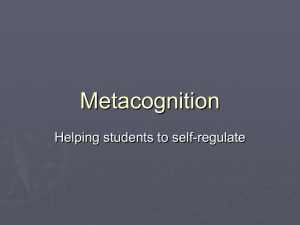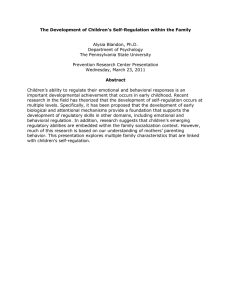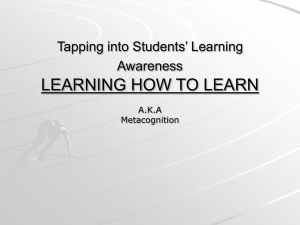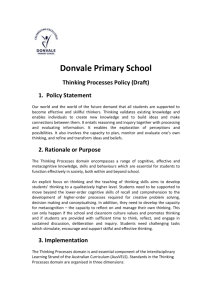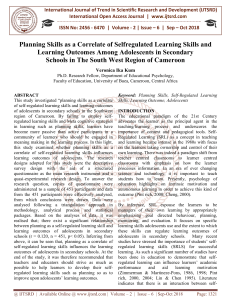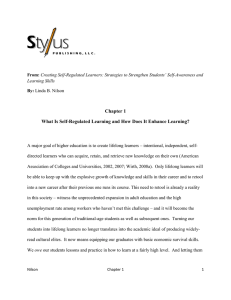Current Event 1-Promoting Self Regulation and Metacognition
advertisement
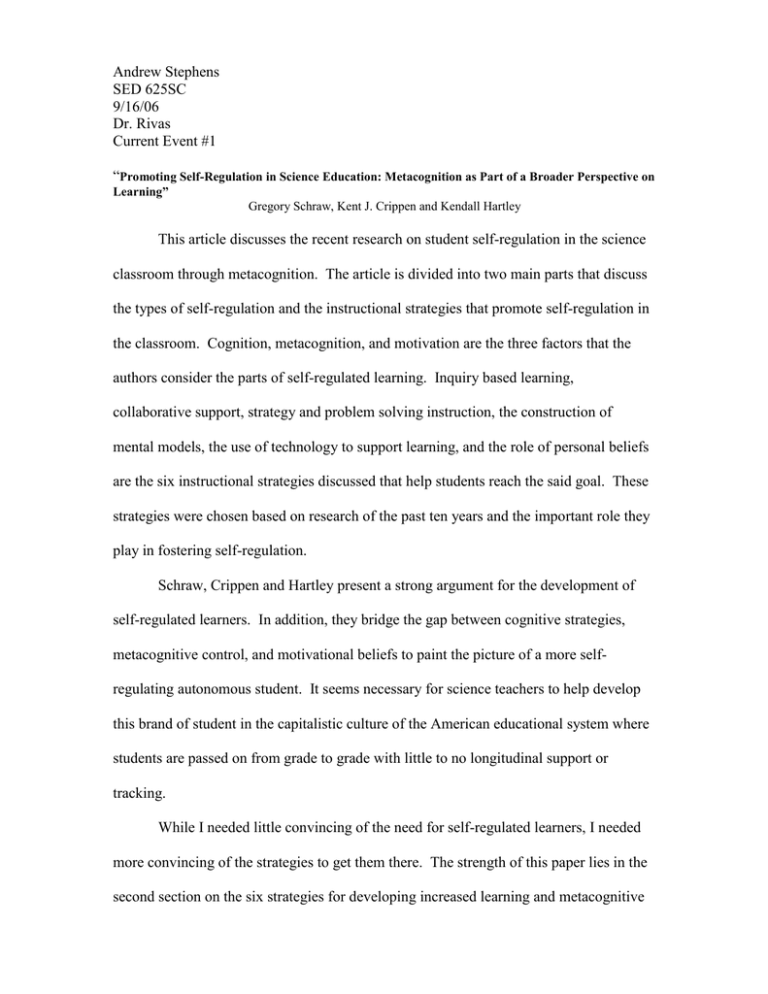
Andrew Stephens SED 625SC 9/16/06 Dr. Rivas Current Event #1 “Promoting Self-Regulation in Science Education: Metacognition as Part of a Broader Perspective on Learning” Gregory Schraw, Kent J. Crippen and Kendall Hartley This article discusses the recent research on student self-regulation in the science classroom through metacognition. The article is divided into two main parts that discuss the types of self-regulation and the instructional strategies that promote self-regulation in the classroom. Cognition, metacognition, and motivation are the three factors that the authors consider the parts of self-regulated learning. Inquiry based learning, collaborative support, strategy and problem solving instruction, the construction of mental models, the use of technology to support learning, and the role of personal beliefs are the six instructional strategies discussed that help students reach the said goal. These strategies were chosen based on research of the past ten years and the important role they play in fostering self-regulation. Schraw, Crippen and Hartley present a strong argument for the development of self-regulated learners. In addition, they bridge the gap between cognitive strategies, metacognitive control, and motivational beliefs to paint the picture of a more selfregulating autonomous student. It seems necessary for science teachers to help develop this brand of student in the capitalistic culture of the American educational system where students are passed on from grade to grade with little to no longitudinal support or tracking. While I needed little convincing of the need for self-regulated learners, I needed more convincing of the strategies to get them there. The strength of this paper lies in the second section on the six strategies for developing increased learning and metacognitive life-long learning skills. The strategies are clearly presented with their general purpose, methods of implementation, examples of strategies, and barriers towards their implementation. These research proven strategies overlap, which snowballs their strengths. For example, the use of technology can help students check their mental models, simplify their inquiry based learning so they can focus on the big picture, or increase collaborative support through high tech communication. The weaknesses of the article’s ideas include a couple significant barriers in the implementation of strategies and the long-term focus that I deem unaligned with the short-term focus of high stakes testing. To implement the strategies of inquiry based learning or collaborative support at a school or district would require much professional development that many schools lack and some teachers disdain. The funding issue is also a problem for the advancement of technology in schools. The second fundamental weakness of the research, as cited by the authors, is that some of the strategies, such as inquiry based learning, may decrease achievement, when measured by traditional means, in the short run. To exercise the aforementioned strategies would also take precious time away from the all-important standards. While I agree with the long-term interests of the authors, schools and teachers often focus on preparing students in the short-term for high stakes tests such as the STAR, CAHSEE, or CST. Perhaps, this is only a weakness of the education system and a strength of the article. I believe the strategies outlined above will be very valuable in my own classroom towards the end of developing metacognition and self-reliance in my students. I have sometimes shortchanged them in the past when teaching them knowledge based ideas over long-term learning strategies. I plan to pass these strategies along.
